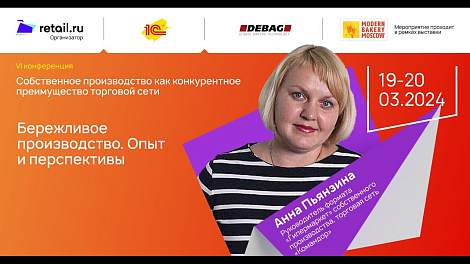The voice of the customer is one that retailers are increasingly willing to listen to as service and satisfaction become essential. Joanna Perry finds out how shoppers are being surveyed.
Retailers have turned to technology to help keep their fingers on the pulse when it comes to what their customers think about them.
From New Look and its social network-based customer panel, to Co-operative Group, which collects customer responses through the Chip and PIN machines at its tills, there is no end of ingenious ways to tap into consumers' collective conscious.
One name you might have seen if you've scrutinised a Boots receipt lately is Empathica. It runs the platform behind Boots' customer feedback programme Customer Care Measure, which invites shoppers at the point of sale to give feedback either online or over the phone.
Empathica UK managing director Gary Topiol explains what his retail customers want: "The goal is to get 30 to 50 responses from customers per location per month to understand loyalty and sales, but also enough for branch managers to understand what is going on in stores.
"Traditionally when organisations have tried to do this they have relied on exit surveys or calling people at night. We invite people at the point of purchase – on receipts or invitations – to complete a survey when they want and how they want."
Boots has worked with Empathica for two years and says that the volume of responses it is getting from surveying customers this way provides powerful feedback. It began with a pilot in a sample of stores to understand how the customer surveys could work. By May 2007, Boots had extended the survey work being done to get feedback from customers in all Boots stores. And in April last year, following the creation of Boots UK, Alliance Pharmacy customers were invited to share their views too.
Boots receives more than 100,000 responses a month and says that it gets responses from customers for every one of its shops and pharmacies each week. However, not all customers are invited to take part in the survey. Boots Customer Care Measure programme manager Karen Booth explains that the invitations are random, ensuring that feedback is received from a variety of customers.
She says: "The customer feedback scheme works by inviting a random selection of our customers to share their views with us. In our stores, the survey invitations are either generated as part of the till receipt or, in the pharmacy, are handed to the customer via a leaflet. Our customers respond either by using a dedicated website or by using a free telephone number."
Information age
Boots collects information to help it decide how loyal its customers are, as well as to gain an insight into how satisfied they were with their most recent visit to its stores. Because customers can leave comments of their choice as well as rating Boots on various measures, store teams are able to recognise particular staff members who have given great customer service and motivate them further.
Booth explains: "We measure overall satisfaction with the customer's recent visit and also ask questions that help us understand how loyal customers are towards Boots. We think of these as the outcome measures and we know that there are many factors influencing this outcome.
"We ask additional questions around things that we know contribute towards the customers' sense of satisfaction and loyalty such as the store environment, speed of service, how friendly and helpful the staff are, whether they felt Boots offered good value for money and quite simply whether they enjoyed their shopping experience. Customers also leave comments about their shopping experience and the service they have received."
Topiol explains that responses are measured using a scale system: "The preferred scale is a five-point scale from strongly agree to strongly disagree." It is possible to identify different buying patterns between customers who rate a retailer as a four or a five on this scale, says Topiol, even though these scores might seem similar. He says that the difference is more marked than for customers who rate a retailer as a three or a four.
Empathica also asks open-ended questions to gather what the company calls "wow comments". Obviously, it is also important to keep an eye on the bottom scorers, which might identify problems at particular stores.
In the past two years Boots reports that there has been a gradual but marked improvement in the ratings it receives from customers via the Empathica surveys. As it has received more than 1 million responses a year, Booth says that the analysis of the results has been very robust.
Topiol adds that Empathica's retail customers tend to access reports at all levels. He says: "Normally store managers can log on to our website with a front page dashboard, and can then go into more detail, read comments and look if the store is struggling on different shifts or days of the week. This view is scaled up by hierarchy. The head office will use the tool and perhaps the raw data to plug into other systems."
System rewards
In 2008 Boots introduced a reward scheme for store staff, which uses the customer care key performance indicator from the programme as one of the metrics that decides bonus payments. Booth says that this has further focused store staff on providing great customer care.
There is also flexibility in the questions asked, so Boots can gather feedback on particular issues at particular times. "The questions we ask our customers on the surveys have already evolved over time," she says. "For example, we have developed a specific survey tailored to our pharmacy customers collecting prescriptions as we know they have some different needs and expectations. We also have capacity within the survey to ask additional questions around a certain topic. We do this sometimes because we just simply want to understand in more depth why customers are giving us certain feedback and sometimes it is to gain more information around our execution of events or initiatives in store."
Boots also runs its Advantage Card loyalty scheme, which allows it to collect volumes of data on purchasing habits. It believes that the information from the surveying programme complements and further completes the loyalty data. Booth says: "The data we get from the Boots Advantage Card scheme tells us about shopper behaviour and of course, with customers' permission, can be used as a marketing tool, but does not tell us what our customers think about the shopping experience in Boots. This is where the customer care feedback survey comes in to play. The two sets of information complement each other very well and we see significant potential in marrying the two together in future."
Superdrug operates a similar programme, inviting customers to provide feedback via a website using its till receipts. It offers a 10 per cent discount to customers who participate in this way.
An alternative to the web is to take feedback via mobile phones. Fizzback has made waves in the retail industry with its platform that allows customers to text feedback to retailers, as well as use other channels, which is analysed using technology to help work out how the feedback should be dealt with. Several of the retailers that Fizzback works with are now proactively seeking feedback at different stages of the customer journey.
Fizzback reached the milestone of 330,000 comments a month across its SMS, email, voice and web channels in January this year, and reports that SMS is by far the most widely used feedback channel. Email was second, followed by phone calls. The web and other media (such as feedback cards in stores) made up only a small percentage of the total.
As well as being trialled by Tesco, Fizzback has been adopted by Phones 4U, Carphone Warehouse and T-Mobile. For the type of complex sales and ongoing relationships that these companies will have with their customers, feedback is important not just at the initial point of purchase, but further down the line. Fizzback is also able to contact customers who have completed multichannel sales, at the point a product is installed, once they have contacted customer services, or dealt with support or repairs.
Co-op took a different, and novel, approach to collecting customer feedback in 2007, when it made modifications to the software running its Chip and PIN terminals so that it could run customer surveys on them while customers wait to pay.
It took just eight weeks to complete the development work and has seen the company receive up to 500,000 responses to questions within a week.
However retailers choose to try to engage with their customers, these examples all show that when customers are given the chance to voice their opinion, via any convenient channel, they will. The web and mobile phones in particular have created great channels to let customers speak to companies.
The one proviso is accepting that not all the feedback received will be a pat on the back. If you ask people their opinion then you must be prepared to respond with actions – whatever they say.






